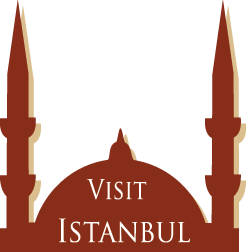History
Istanbul of the day conforms the definition of a great city, not only with her population and the area she covers but also with the variety of cultures and ways of living. This cultural structure which enables a good number of elements that contradict with each other and yet exist together even one in another, is the produce of an accumulation of about one thousand years. Although first settlements in Istanbul were observed in prehistoric periods, continual settlements, however, have started in the colonial period. Foundations of Istanbul of our days were laid during recent periods of the Roman Empire. Byzantium and Ottoman periods are the most significant stages in the history of Istanbul. In both of these periods, Istanbul has preserved her features of being a political and religious center and has become the religious center of both, the Christianity and the Islam. Therefore, she was ornamented with many great monuments with different functions belonging to these two religions. Although Ankara was elected to be the capital during the Republic period, Istanbul conserved her characteristic of being the cultural capital.

Suleymaniye MosqueFirst settlements forming the nucleus of today's city were realized by Megarians in the 7th century BC. They run away from Greece invaded by Dors, crossed the Sea of Marmara in BC 680 and settled in the city they established with the name Chalcedon on the Cape of Moda in Kadiköy and engaged in agriculture. Another branch of Megarians settled down in the vicinity of Sarayburnu under the leadership of Byzas (Point of Seraglio) in 660 BC. They named this place Byzantion. They engaged in Commerce. This area was seized by Persians in 513 BC, then by Spartians in 405 BC and by Antigers, one of the commanders of Alexander the Great, in 318 BC. And completely attached to Rome in 74 BC. It was within the boundries of BithyniaPontus State of Rome in 73 AD. In 330, Constantine I, Emperor of Rome, proclaimed the city as the capital. And the name Byzantion was converted to Constantinopolis. Then, with adoption of christianity, she became the most important culture and art center of christianity throughout the medieval age. Later on she became the political and economic center (395). After partition of Roman Empire in two parts, she became the capital of the East Roman Empire (Byzantium Empire). New sections formed as a result of growth in the population of the town. Subjected to the aggression of the Huns in 440. During Blue Mosquethe periods of Anastasios I (491-518) and Justinianos I (527-565), she became the scene of civil wars and uprisals. Sycae which gained importance in the period of Justinianos I, was connected to the city with a bridge over the Golden Horn. The town was attacked by Sassanians and Avars in 7th century, by Bulgarians and Ârabs in 8th century and by Russians and Bulgarians in 9th century, but they could not capture the town. Crusaders attacked and captured the town in 1204. Damaged it immensly. Town was the capital of the Latin Empire till 1261. New trade relations emerged due to crusades. Town started collapsing more and more. Ottomans sieged the town first in the periods of Beyazid I (13891402) and Murat II (1422). Mehmet II added the town to the lands of Ottoman Empire in 1453. Capital of the Ottoman Empire, was moved from Adrianople to Constantinopolis. The city became the Capital of Caliphate in Selim I's period (1517). Name of the town after some changes became Istanbul. Fires and earthquakes damaged the town to a great extent, during Balkan war which started in 1912 with dethronment of Abdülhamit II and World War I, the town was occupied and damaged immensely. After establishment of TBMM (Great National Assembly of Turkey) in Ankara on 23 April 1920, Mehmet VI the last Ottoman Sultan left the town. The town then was placed under the control of the TBMM Government and liberated from occupation (6 October 1923). Then it became the culture and art center of the republican period, which has been maintained upto date
Crusaders attacked and captured the town in 1204. Damaged it immensly. Town was the capital of the Latin Empire till 1261. New trade relations emerged due to crusades. Town started collapsing more and more. Ottomans sieged the town first in the periods of Beyazid I (13891402) and Murat II (1422). Mehmet II added the town to the lands of Ottoman Empire in 1453. Capital of the Ottoman Empire, was moved from Adrianople to Constantinopolis. The city became the Capital of Caliphate in Selim I's period (1517). Name of the town after some changes became Istanbul. Fires and earthquakes damaged the town to a great extent, during Balkan war which started in 1912 with dethronment of Abdülhamit II and World War I, the town was occupied and damaged immensely. After establishment of TBMM (Great National Assembly of Turkey) in Ankara on 23 April 1920, Mehmet VI the last Ottoman Sultan left the town. The town then was placed under the control of the TBMM Government and liberated from occupation (6 October 1923). Then it became the culture and art center of the republican period, which has been maintained upto date
Due to her geographic location, Istanbul has always been a settlement area from early ages onwards. And besides connecting the two continents, Europe and Asia, Istanbul has become a center where various cultures and religions are combined, surrived and succeeded each other.

